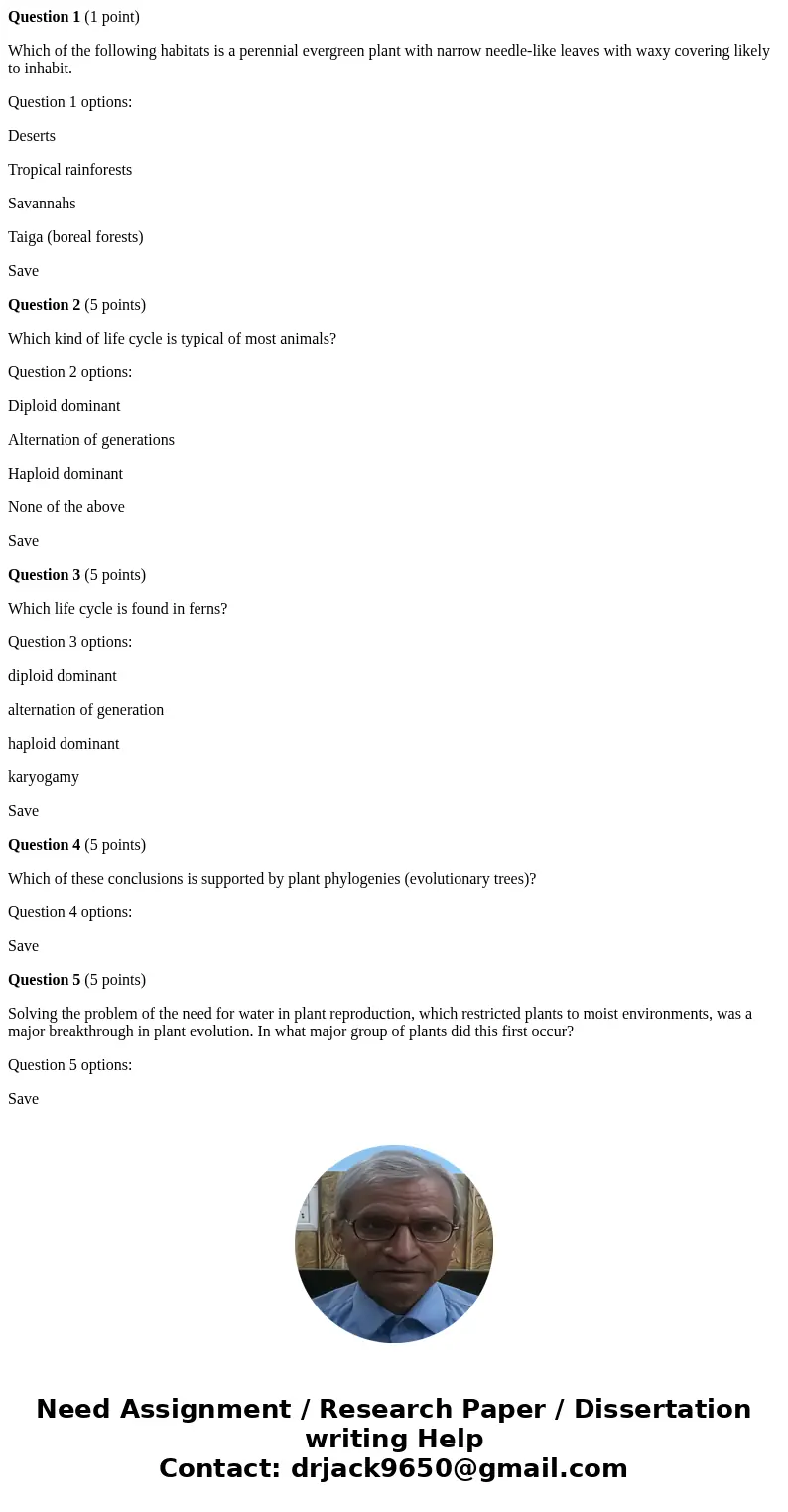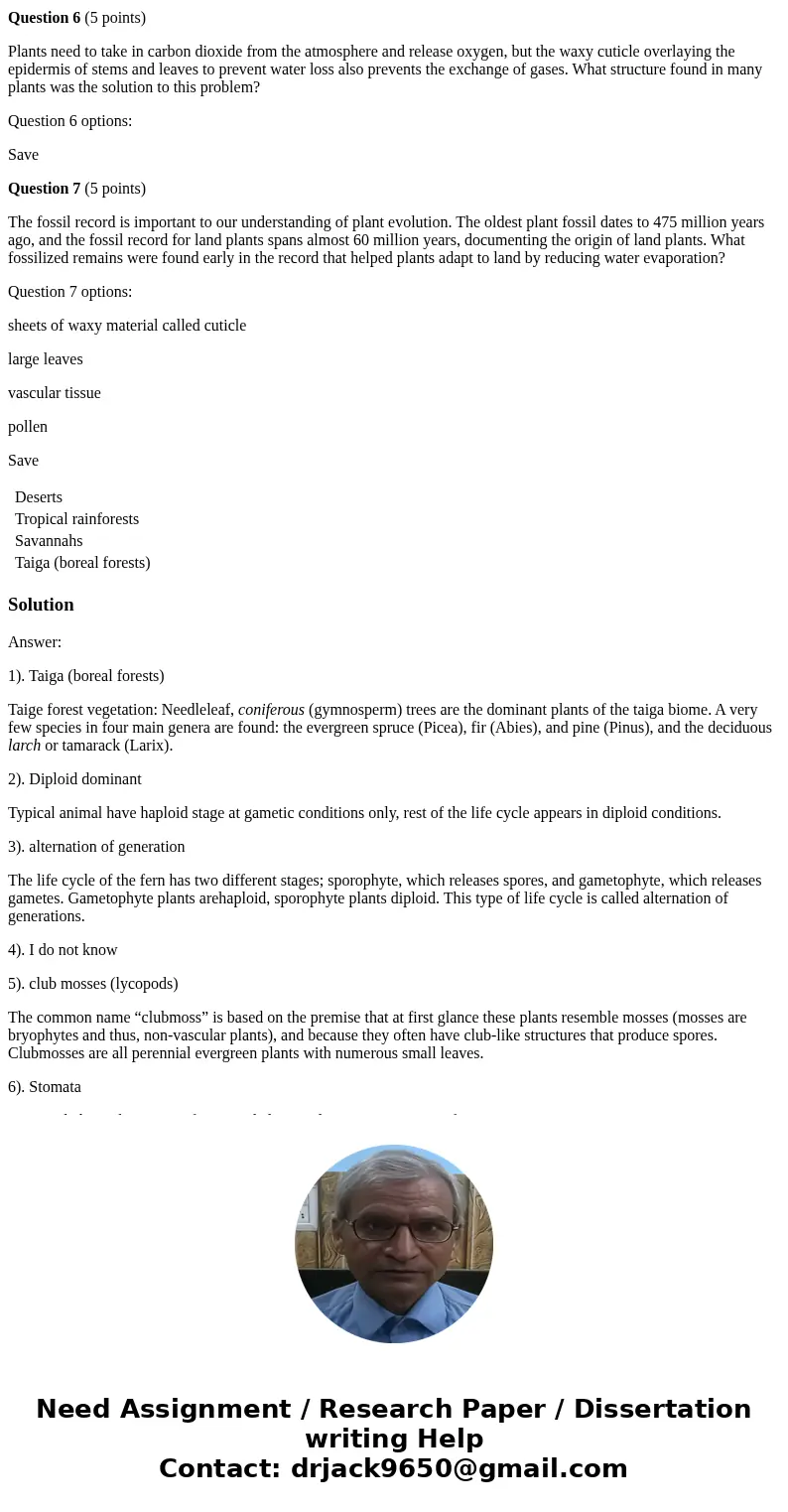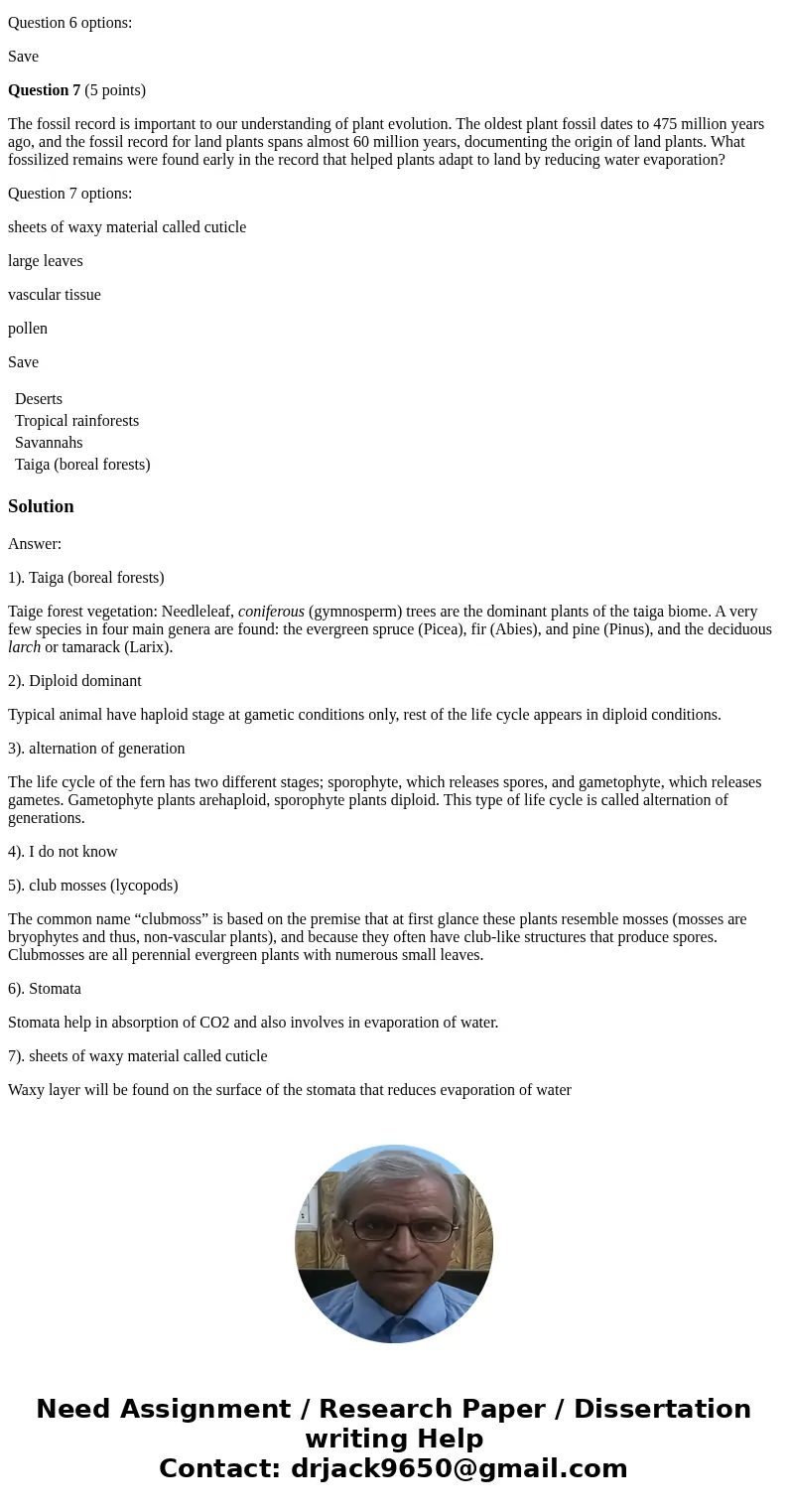Question 1 1 point Which of the following habitats is a pere
Question 1 (1 point)
Which of the following habitats is a perennial evergreen plant with narrow needle-like leaves with waxy covering likely to inhabit.
Question 1 options:
Deserts
Tropical rainforests
Savannahs
Taiga (boreal forests)
Save
Question 2 (5 points)
Which kind of life cycle is typical of most animals?
Question 2 options:
Diploid dominant
Alternation of generations
Haploid dominant
None of the above
Save
Question 3 (5 points)
Which life cycle is found in ferns?
Question 3 options:
diploid dominant
alternation of generation
haploid dominant
karyogamy
Save
Question 4 (5 points)
Which of these conclusions is supported by plant phylogenies (evolutionary trees)?
Question 4 options:
Save
Question 5 (5 points)
Solving the problem of the need for water in plant reproduction, which restricted plants to moist environments, was a major breakthrough in plant evolution. In what major group of plants did this first occur?
Question 5 options:
Save
Question 6 (5 points)
Plants need to take in carbon dioxide from the atmosphere and release oxygen, but the waxy cuticle overlaying the epidermis of stems and leaves to prevent water loss also prevents the exchange of gases. What structure found in many plants was the solution to this problem?
Question 6 options:
Save
Question 7 (5 points)
The fossil record is important to our understanding of plant evolution. The oldest plant fossil dates to 475 million years ago, and the fossil record for land plants spans almost 60 million years, documenting the origin of land plants. What fossilized remains were found early in the record that helped plants adapt to land by reducing water evaporation?
Question 7 options:
sheets of waxy material called cuticle
large leaves
vascular tissue
pollen
Save
| Deserts | |
| Tropical rainforests | |
| Savannahs | |
| Taiga (boreal forests) |
Solution
Answer:
1). Taiga (boreal forests)
Taige forest vegetation: Needleleaf, coniferous (gymnosperm) trees are the dominant plants of the taiga biome. A very few species in four main genera are found: the evergreen spruce (Picea), fir (Abies), and pine (Pinus), and the deciduous larch or tamarack (Larix).
2). Diploid dominant
Typical animal have haploid stage at gametic conditions only, rest of the life cycle appears in diploid conditions.
3). alternation of generation
The life cycle of the fern has two different stages; sporophyte, which releases spores, and gametophyte, which releases gametes. Gametophyte plants arehaploid, sporophyte plants diploid. This type of life cycle is called alternation of generations.
4). I do not know
5). club mosses (lycopods)
The common name “clubmoss” is based on the premise that at first glance these plants resemble mosses (mosses are bryophytes and thus, non-vascular plants), and because they often have club-like structures that produce spores. Clubmosses are all perennial evergreen plants with numerous small leaves.
6). Stomata
Stomata help in absorption of CO2 and also involves in evaporation of water.
7). sheets of waxy material called cuticle
Waxy layer will be found on the surface of the stomata that reduces evaporation of water



 Homework Sourse
Homework Sourse